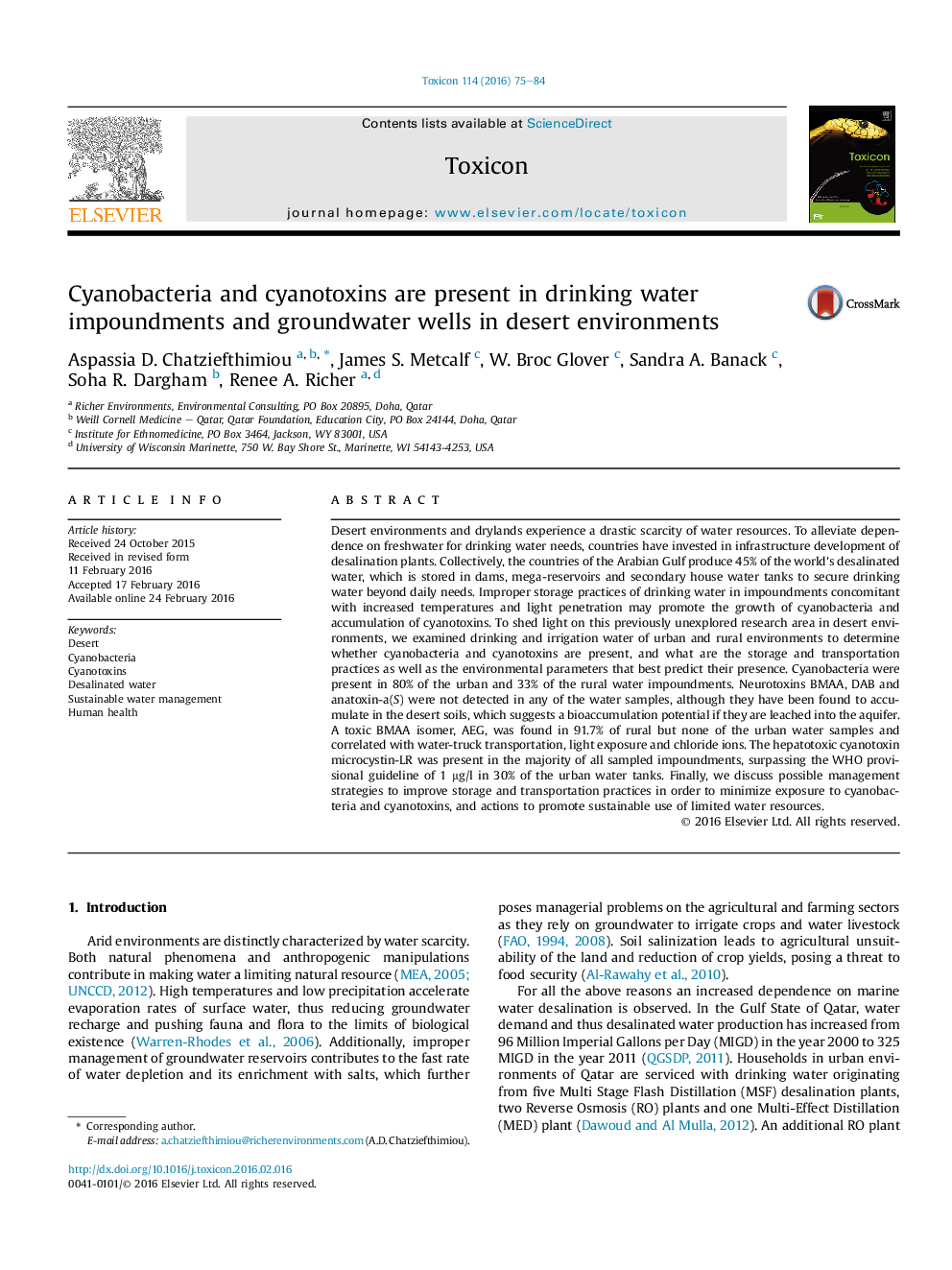| Article ID | Journal | Published Year | Pages | File Type |
|---|---|---|---|---|
| 2064077 | Toxicon | 2016 | 10 Pages |
•We examine drinking and irrigation water for presence of cyanobacteria and toxins.•Cyanobacteria were present in 80% of the urban and 33% of the rural water samples.•Microcystin-LR surpassed WHO guideline of 1 μg/l in 30% of the urban water samples.•AEG accumulated in water transported in trucks and tanks exposed to the sun.•We discuss strategies to minimize toxin exposure and promote sustainable use of water.
Desert environments and drylands experience a drastic scarcity of water resources. To alleviate dependence on freshwater for drinking water needs, countries have invested in infrastructure development of desalination plants. Collectively, the countries of the Arabian Gulf produce 45% of the world's desalinated water, which is stored in dams, mega-reservoirs and secondary house water tanks to secure drinking water beyond daily needs. Improper storage practices of drinking water in impoundments concomitant with increased temperatures and light penetration may promote the growth of cyanobacteria and accumulation of cyanotoxins. To shed light on this previously unexplored research area in desert environments, we examined drinking and irrigation water of urban and rural environments to determine whether cyanobacteria and cyanotoxins are present, and what are the storage and transportation practices as well as the environmental parameters that best predict their presence. Cyanobacteria were present in 80% of the urban and 33% of the rural water impoundments. Neurotoxins BMAA, DAB and anatoxin-a(S) were not detected in any of the water samples, although they have been found to accumulate in the desert soils, which suggests a bioaccumulation potential if they are leached into the aquifer. A toxic BMAA isomer, AEG, was found in 91.7% of rural but none of the urban water samples and correlated with water-truck transportation, light exposure and chloride ions. The hepatotoxic cyanotoxin microcystin-LR was present in the majority of all sampled impoundments, surpassing the WHO provisional guideline of 1 μg/l in 30% of the urban water tanks. Finally, we discuss possible management strategies to improve storage and transportation practices in order to minimize exposure to cyanobacteria and cyanotoxins, and actions to promote sustainable use of limited water resources.
Graphical abstractFigure optionsDownload full-size imageDownload as PowerPoint slide
